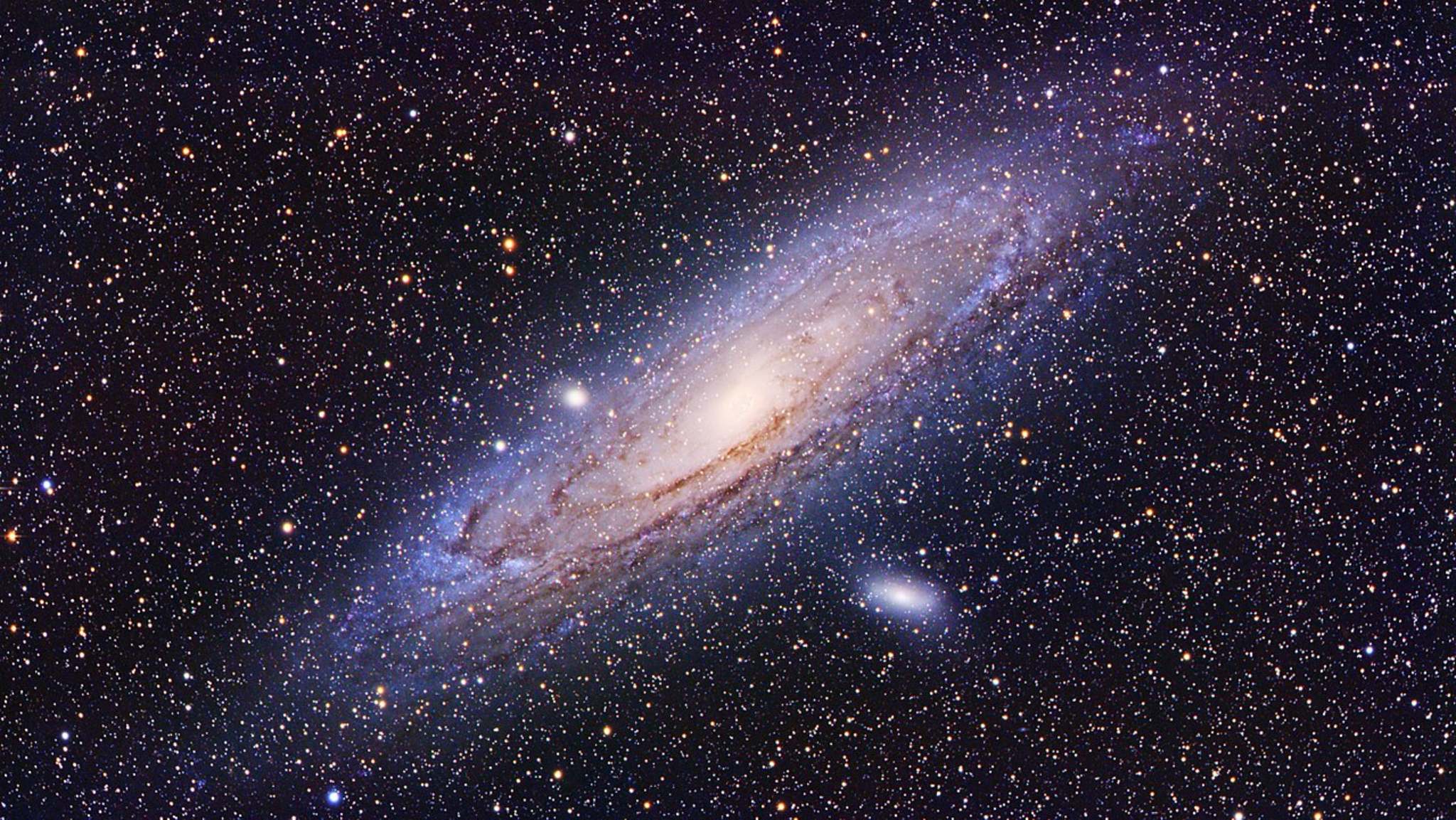Seeing Giant Galaxies
This is the season to look for the farthest object a human eyeball can see without help — the Andromeda Galaxy, or Messier 31. This large spiral galaxy is a sister to our own Milky Way galaxy. It sits 2.5 million light-years away from our sun, meaning that its stars’ light has been journeying for that length of time.
Under dark skies, using unaided eyes only, you should be able to see a faint fuzzy patch that is elongated left and right. The galaxy spans six full moon diameters across the sky, but only its bright core and surrounding, dimmer halo are usually seen visually. It’s quite easy with binoculars.
Because their fields of view are too narrow to see the entire galaxy, small telescopes generally only show its bright core. Be sure to look for Andromeda Galaxy two companions, the small elliptical galaxies designated M32 and M110. M32 is close to the big galaxy’s core and situated just to the lower right. M110 is above the main core and slightly farther away. At 2.49 million light-years, M32 is closer to us than the Andromeda Galaxy. M110 is 200,000 light-years farther away.
To find M31, you can first find the medium-bright star Mirach. It’s the second star east of the eastern corner of the Great Square of Pegasus. Then look for a dimmer star about 4 finger widths above Mirach. The galaxy is higher by the same distance. Alternatively, you can use the highest three stars of the W-shaped constellation Cassiopeia (the Queen). Those three bright stars form an arrow that points directly at M31.
Another large galaxy, called Triangulum Galaxy, is 2.75 million light-years away. Observers with very keen eyes under very dark sky conditions can sometimes see it, too — setting the record. This galaxy is tougher because it is oriented nearly face-on to Earth — so its light is spread across a larger patch of sky, making it dimmer overall. It sits only 1.3 fist diameters below M31, a palm’s width below the star Mirach.
